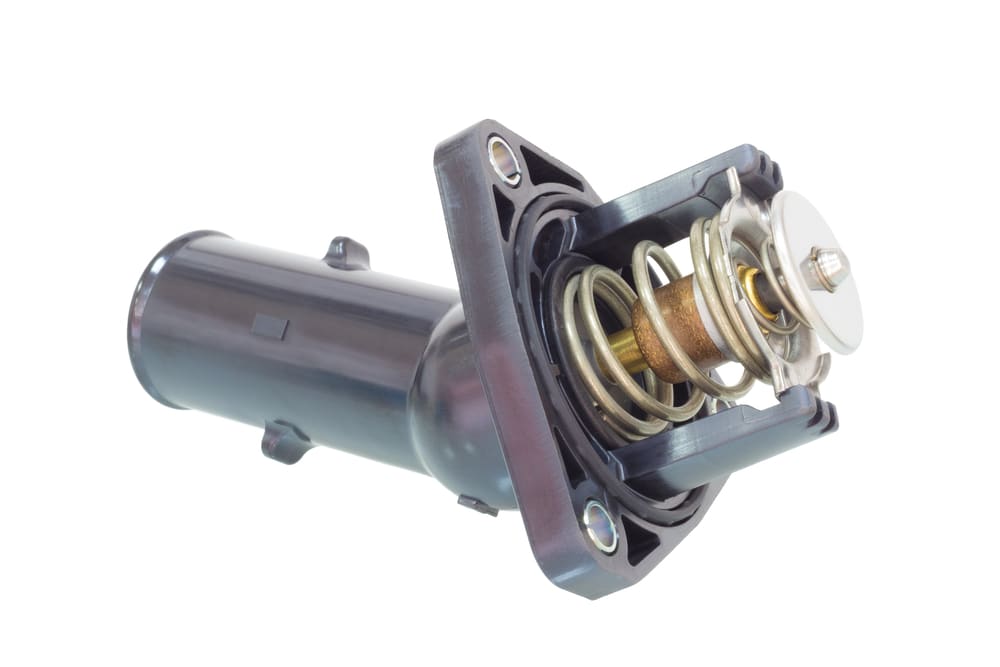

Today's modern engines utilize a complex system of sensors, computers and components to reduce vehicle emissions across the board. However, with the introduction of the EGR system in 1966, vehicle emission systems were controlled mechanically by a system of vacuum-operated and monitored components. One of these parts is called the thermostatic vacuum sensor, which is a vital component that reduces emissions of potentially harmful gases but also helps to control the operating temperature of the combustion engine found in most road traveling vehicles.
The thermostatic vacuum sensor is typically located on the front of the intake manifold and taps into the coolant passage system to monitor the engine coolant temperature. Essentially, it acts as a safety device to prevent overheating of the engine as unburnt vehicle exhaust emissions are recirculated through the intake manifold by way of the EGR exhaust tube. The thermostatic vacuum sensor operates like a traffic controller when it comes to directing vacuum to certain operations in your car’s engine, working closely with the temperature of the engine coolant.
In some cases, the thermostatic vacuum sensor works to delay the operation of a specific component, such as an EGR valve, until a certain temperature is reached in order to avoid a rough idle or start. In other cases they may be used to operate a specific component only until a certain temperature is reached, such as a heat riser valve. This component is found on vehicles that were manufactured prior to the introduction of computer controlled emissions systems. The exact range of use is best discovered by reviewing the service or owner manual of any vehicle you own; but for the most part, this part was used prior to 2010.
On many vehicles, the thermostatic vacuum sensor is designed to last the lifespan of the vehicle. However, whether it's due to exposure to high heat areas, the potential of being damaged due to corrosion, or exposure to grime, it is possible for this part to wear out or fail completely. When it does, it will display a few common warning signs or symptoms that will alert the driver that a problem with the thermostatic vacuum sensor exists. Noted below are a few of these common warning signs that should inspire you to contact a local ASE certified mechanic who can properly diagnose and replace the thermostatic vacuum sensor if it is broken.
1. Check Engine Light comes on
In vehicles that have electronic control modules, the thermostatic vacuum sensor will be attached to an electrical harness that will transmit its signal and relative information to the ECM. This doesn't necessarily mean that the ECM controls the EGR system. On many vehicles, it's just a monitoring device that will trigger an error code inside the ECM if the unit is damaged or faulty in any way. When this occurs, it will trigger the Check Engine Light to illuminate on the dashboard or instrument cluster.
Anytime the Check Engine Light comes on, it should be taken seriously, as it may be a serious issue inside the engine that might lead to complete engine failure if not properly diagnosed and repaired. If the temperature vacuum sensor is broken, it may lead to engine overheating, a blown head gasket, and internal engine damage. Always consult a professional mechanic if the Check Engine Light comes on to be on the safe side.
2. Poor engine performance
In many cases, poor engine performance will be the deciding factor on whether the thermostatic vacuum sensor is malfunctioning. This is a result of the various engine components either not being elevated to the correct operating temperature or conversely, operating beyond a specific temperature. This is especially critical on a hot day when stuck in traffic.
As mentioned above, the purpose of this on earlier vehicles was to advance the timing at idle in order to cool down the engine when necessary. In today’s vehicles, when this component is not working correctly, you will undoubtedly see your Check Engine Light on as a result of an imbalance in your vehicle’s systems not working together. This can result in numerous different error codes being triggered.
In order to accurately diagnose this issue, a certified mechanic will need to utilize a digital scanner to download these OBD-II error codes and decipher which component is triggering the error code and causing the sluggish engine performance.
3. Engine overheats
Finally, if the engine is frequently running hot, it may be due to a faulty thermostatic vacuum sensor. There are multiple potential reasons why an engine runs hot, ranging from low radiator coolant levels to leaks in the coolant system or broken water pumps. Regardless of the precise cause, any overheating situation should be closely monitored by the driver and reviewed by a professional mechanic if the issues continue.
Replacing the thermostatic vacuum sensor is a job best left to a professional mechanic. If you experience any of the above symptoms or warning signs, contact one of our experts from YourMechanic who can arrive to your home or office and diagnose what's causing the poor performance of your vehicle.



